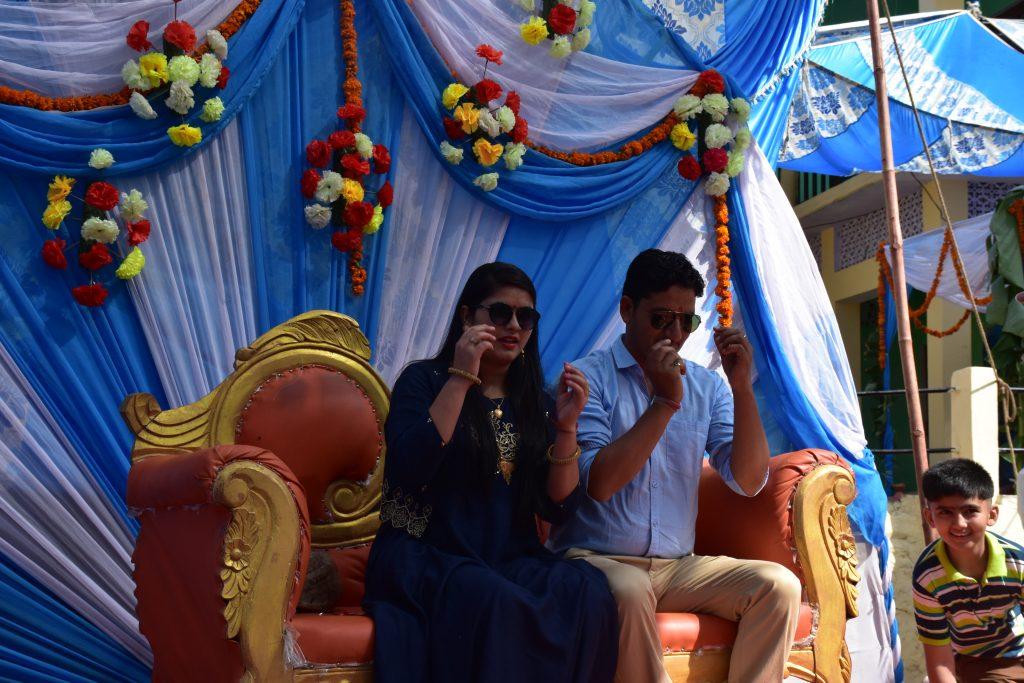
On December 3 we celebrate the International Day of People with Disabilities, and the theme for 2020 is ‘Not all Disabilities are Visible’. An invisible disability is a physical, mental or neurological condition that is not visible from the outside, that limits a person’s movements, senses, or activities. The very fact that these symptoms (debilitating pain, fatigue, dizziness, cognitive dysfunctions, brain injuries, learning differences and mental health disorders, as well as hearing and vision impairments) are invisible can lead to limitations in daily activities, misunderstandings, false perceptions, judgments, and missed opportunities.
According to the WHO World Report on Disability, 15 per cent of the world’s population, or more than 1 billion people, are living with disability. There is a lack of data around persons with invisible disabilities: while in the US, almost 10% of the population is known to have a medical condition that could classify them as having an invisible disability, data does not exist for most countries, yet we know that many people have chronic ‘invisible’ conditions such as back problems, mild cognitive impairments, psycho-social disabilities, chronic pain, chronic fatigue, vision and hearing .
People with invisible disabilities are limited in ways that can’t be imagined. A person with speech difficulties could be shrugged off, a person with social anxiety could find it difficult to navigate market spaces that lack universal design, a person with cognitive impairment could be fed and kept clean, while his/her choices and preferences are ignored. The list is endless. The mindset needs to shift beyond braille, wheelchairs and ramps to Universal Access, Universal Design and Universal Acceptance of neuro-diversity. And disabled persons who constitute 15% of the population should not be demanding these- the other 85%, i.e. the supposedly able part of the population, should be ensuring these rights and accommodations as basic to everyone. A rights based approach could also mitigate the rampant stigma and discrimination against persons with disabilities, both visible and invisible. Despite a marked increase in amendments, laws and regulations in favour of persons with disabilities, every day also brings more news of harassment, discrimination, abuse and neglect in various forms, forcing advocates and activists to become more vocal and firm in their demand for justice, equal treatment and respect.
This year the COVID-19 pandemic has underlined again the ways in which people with disabilities are limited by design. In communities where we – the authors – work, we know of the challenges experienced by people hard of hearing who tried to access the helpline – a lone voice-based option for a socially distanced world connecting them to a volunteer excluded them at a time when all were hungry for information and dialogue. We know of a young man with intellectual disability who desperately missed his usual group meetings with others and yet no one had slowed and simplified the news about the Coronavirus so he could understand why all were staying at home.
We suggest three ways to bring visibility, enhance acceptance and build inclusion for persons with invisible disabilities in society.
Disclosures and Dialogues:
Invisible disabilities are not immediately apparent. Unless a family member, friend or a peer is disabled, it is not possible to know about or understand invisible disability. Sharing personal stories in safe spaces can encourage others to do the same, so that the awareness and factual information could remove the associated stigma and allow people to seek support. Reading or hearing about personal experiences of those who experience limitations can foster awareness, encourage discussions and provide a space to educate and connect people with invisible disabilities. There has never been a better time to understand invisible disabilities and do more around it.
Redefine Disability: Disabilities are sometimes invisible, but the struggles are real. Impairments do not have to be visible to be validated as a disability. While we have some data around people with visible disabilities, there is no information on the number of people in India who are disabled in not so obvious ways. The magnitude of the situation remains unknown and therefore in oblivion. Action remains to be taken, awareness has just begun and activism to influence the laws, policies and practices to accept, accommodate and include should pick up momentum. A positive mindset of those around can shift the balance towards acceptance and inclusion, and changed attitudes.
Move beyond Ramps – be Creative with Design: It is vital that information and awareness around invisible disabilities is made public with intention; it is crucial to incorporate accommodations and adaptations at schools, workplaces, parking spaces, recreational spaces etc. Till now, accommodations for disability have included a focus on more obvious design variations like ramps and Braille signage. While these approaches are essential, Universal Design goes further, ensuring that products and buildings can be used by virtually everyone, regardless of the nature of their ability. There are many more ways for universal design to meet the needs of all. For example, establish a ‘Quiet hour’ in a market, mall or shopping street – for people who struggle with crowds and noise. How about developing ways so that banking services and contracts today are accessible and available for persons with intellectual disability? Students should feel more comfortable asking for accommodations outside mobility access. Patients should feel more at ease to ask their doctors for relief for pain and fatigue. Would everyone not benefit from a simplified list of assurances and an avenue for trustworthy clarification rather than lengthy and complex terms and conditions?
The pandemic forces us to move beyond isolation, disconnection and diminished services for people with invisible disabilities. Today is an opportunity to improve care and accommodation practices beyond the apparent and the visible.